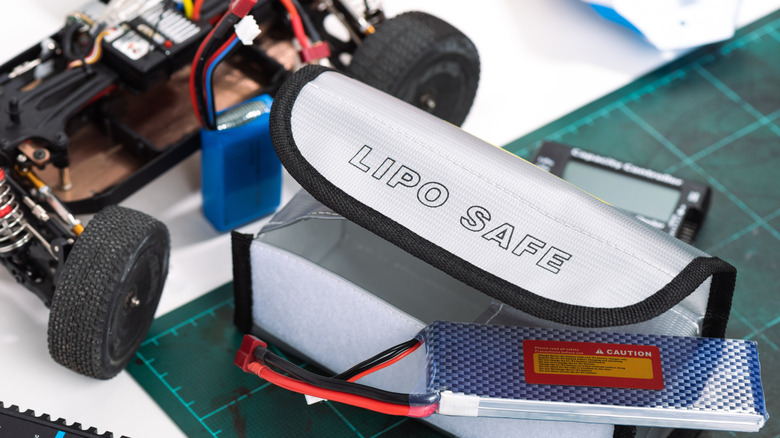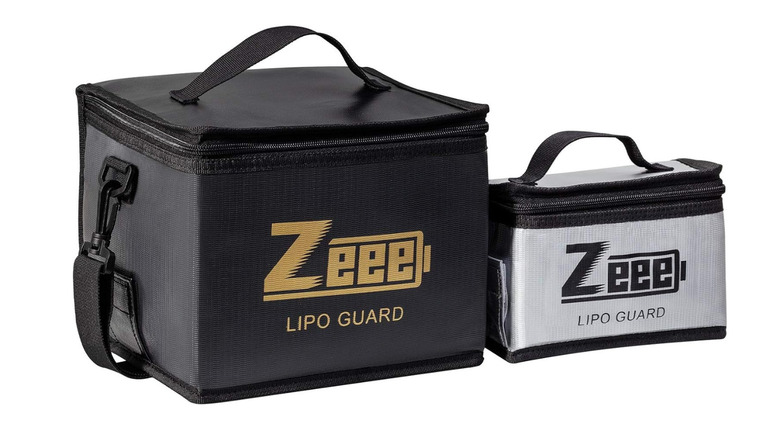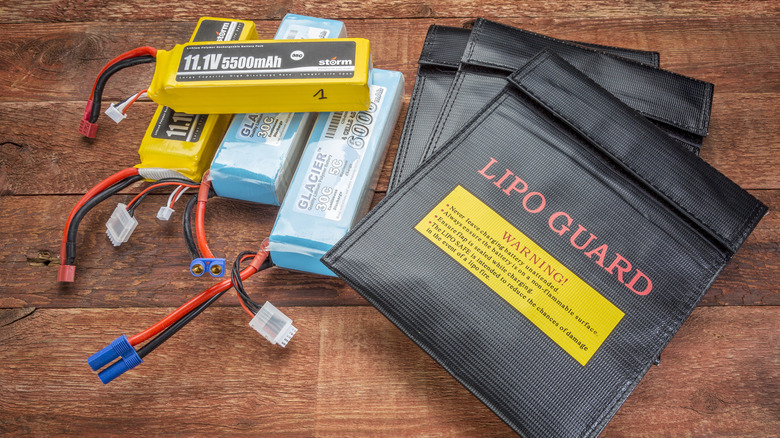Are Lithium Battery Bags Worth It? What To Know Before You Buy
We may receive a commission on purchases made from links.
In a world full of electronics, lithium-ion batteries have become the industry standard for a wide range of rechargeable electronic devices. After all, they're incredibly efficient, have longer lifespans, tend to charge faster, and are more energy-dense. However, since lithium-ion batteries are not created equally, if you're a hobbyist who loves high-performance devices (like camera gear), you've probably come across lithium-ion polymer (LiPo) batteries. They're a type of rechargeable batteries that use a gel-like polymer electrolyte instead of the liquid form found in conventional Li-ion power tool batteries.
They're lighter, more flexible in shape, and can deliver higher discharge rates — which makes them ideal for drones and RC cars. However, while this design comes with a range of perks, it also brings some major flaws about lithium-ion batteries that you should know about. For instance, over the past few years, there have been stories about LiPo batteries overheating, swelling, and, in rare cases, catching fire and exploding. And because of these risks, we've seen the rise of a new product: lipo battery bags.
They are fire-resistant pouches marketed as a safe way to store, charge, and transport LiPo batteries. And that raises the question, are LiPo battery bags actually worth the money? Lithium-ion battery bags aren't a one-size-fits-all purchase. For some users, these bags might be worth the investment, while for others, they may be a waste of money. Since all lithium-ion batteries can potentially catch fire, a battery bag might come in handy if you want to protect your investment and home.
Do lithium battery bags actually work?
At their core, lithium battery bags are simple in design but ambitious in purpose. Products like the Zeee LiPo Battery Fireproof Battery Bag (which retails for just $17.99 on Amazon) are made with fire-resistant materials like fireproof fiberglass fabric and a PVC fiber outer layer. The idea is that, should a lithium-ion battery overheat and ignite a fire, the bag will counter the damage by keeping flames contained. Other models even claim that the bag can reduce the release of toxic fumes, though this feature varies widely.
Many fireproof bags work effectively. When you search online, you will find a number of YouTube tutorials and demonstrations in which people toss a sparking battery into a LiPo battery bag with impressive results. Just remember that these bags are not designed to make batteries fail-proof. Instead, they're meant to keep flames contained, buying you valuable time to react to an emergency. It's also worth noting that, even though some brands might claim that their bags have been tested in controlled environments and can handle high heat, independent testing is limited. That means that when shopping, you'll be left choosing your best lithium-ion battery bag based on marketing promises instead of hard evidence.
When lithium battery bags might be necessary
Statistically speaking, lithium-ion battery fires are quite rare (but dangerous when they occur). Avoiding common mistakes that people make with lithium batteries, like storing them under direct sunlight and overcharging them, is essential. A LiPo battery bag won't prevent problems like overheating or swelling — its purpose is to contain flames and limit damage if something does go wrong. For hobbyists who work with large lithium packs — like e-bike owners and drone pilots — a LiPo battery bag can help mitigate the risks if your battery overheats.
A lithium battery bag can also be useful when traveling by air. Many airlines have strict rules about carrying lithium-ion batteries, often requiring them to be stored in your carry-on luggage and protected from short circuits. Using a fire-resistant bag helps you comply with these regulations and reduces the risk of thermal runaway in a confined space like an airplane.


